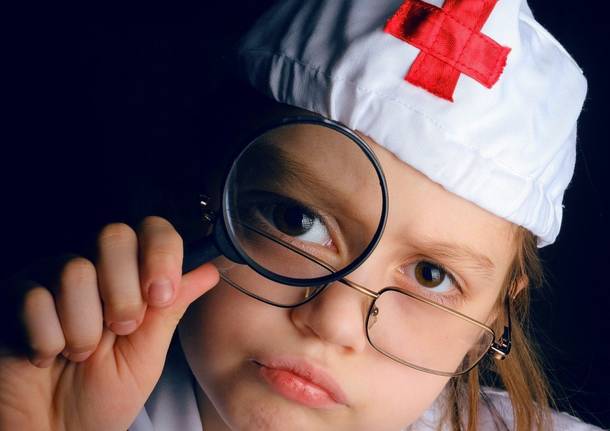Among the unexpected consequences of this pandemic and, above all, of the measures for its containment, there is the significant reduction of infectious diseases, which until last year were very common among children.
“The scenario has changed in a significant and amazing way ”says Massimo Agosti, director of the Department of Women and Children of Asst Sette Laghi and of Neonatology and Pediatrics at the end of January, a period in which the pediatric first aid points were usually clogged with flu or parainfluenza syndromes. “The significant reduction in infectious diseases is certainly a positive fact – he explains – Unfortunately, however, health is complex and in this strange period other developmental disorders have also increased, with different symptoms related to a more forced life and distancing. “

–
NO HOSPITALIZATION FOR BRONCHIOLITIS
Among the most problematic respiratory diseases for the very young there is certainly bronchiolitis, which manifests itself in the first months of life, up to the year, sometimes forcing the very small to hard hospitalizations: “This winter in Varese we have not admitted even a child for bronchiolitis, and it’s a joy, ”says Agosti.
There is a sharp decline in general in both emergency room access and admissions of minors for all infectious diseases of the respiratory or gastrointestinal system. “A really significant reduction of cases that we record here, in the Varese hospitals, but also in Milan, in Lombardy and throughout Italy”, explains Agosti.
MASKS AND VACCINES
“Definitely the merit of the lower diffusion of microbial agents is due to the masks, that a year ago only surgeons and immunosuppressed people used, improved hand hygiene, spacing and in general greater attention even the mildest symptoms ”, explains the chief physician, citing this year’s anti-flu campaign among the factors that made this result possible. A campaign that involved pediatricians more directly who initially called the little ones (up to six years old) and then also opened to older children, offering an administration through nasal spray, perceived by children and parents as less invasive than the traditional injection.
SIDE EFFECTS
In general, the containment of the virus and of social life, even of children (the school then restarted, but not the cultural and sports activities) led the children to spend more time indoors in spaces that were often too narrow or not completely suited to their motor needs and so also in Varese, among children, there was a increased trauma due to domestic accidents.
For the same reason, there has been a general increase in childhood and adolescent overweight.
For the rest, the side effects due to the containment of the virus are different, depending on the age.
Age 0-3 years: there was a higher incidence of language disorders, such as transient stuttering typical of 2-3 years.
Age 3-6 years: higher incidence in the last year also of cases of constipation, a typical sign of a state of greater tension.
Age 6-10 years: clinics have intervened more ononset of tics in school-age children, also in this case attributable to situations of tension to be processed.
From 10 years old: sleep disorders on the other hand, they are increasingly present in adolescents and more adolescents, whose days are spent for months attached to monitors for distance learning and social relations. “There is also a neurophysiological explanation for this – explains Agosti – The blue lights of the screens inhibit melatonin and therefore disturb sleep”.
Stuttering, constipation, tics, overweight, sleep disturbances, and to some extent even trauma, are all transient, transient pathologies that can be solved with the right attention: “Children and young people in general are fine, demonstrate in this long pandemic a great one resistance. and also a resilience which they may not be aware of, but which helps them find their well-being, even in this difficult situation for everyone ”, says Agosti.
CHILDREN AND COVID19
If in the period of greatest intensity of contagions, in November, the coronavirus pandemic also involved children more, with some hospitalization and in some cases, few, but still to be reported, it was also necessary to help children affected by Covid19 with oxygen, at this time when the contagion curve is falling, there are no children hospitalized for Covid19. in the hospitals of Varese. “We hope to continue like this – Agosti hopes – always thanks to everyone’s attention”.
<!– –>
–



